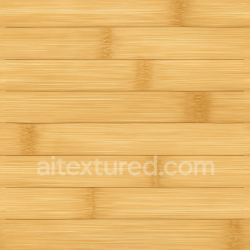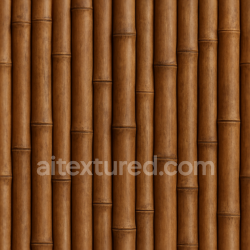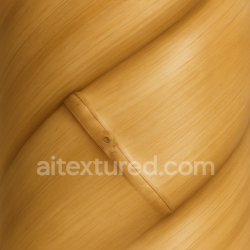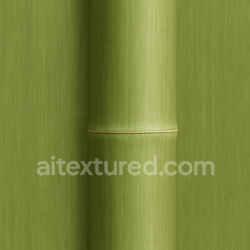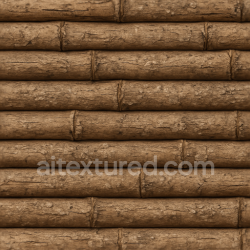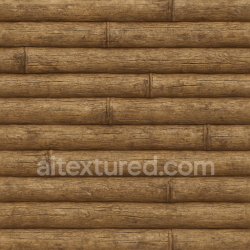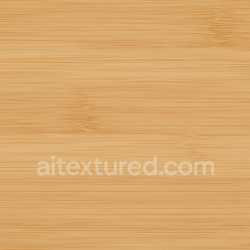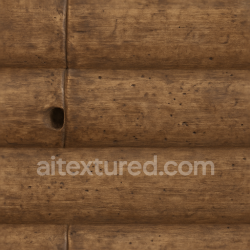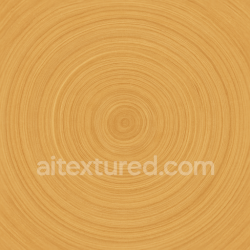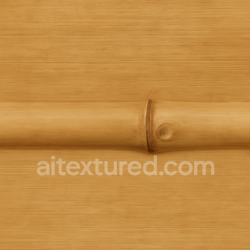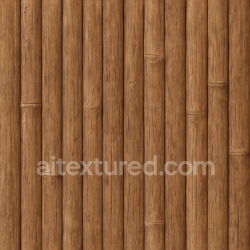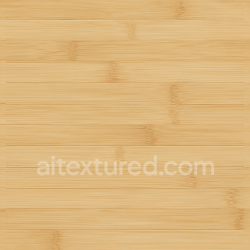Expert Guide to Creating Realistic Chainmail PBR Textures for 3D Art
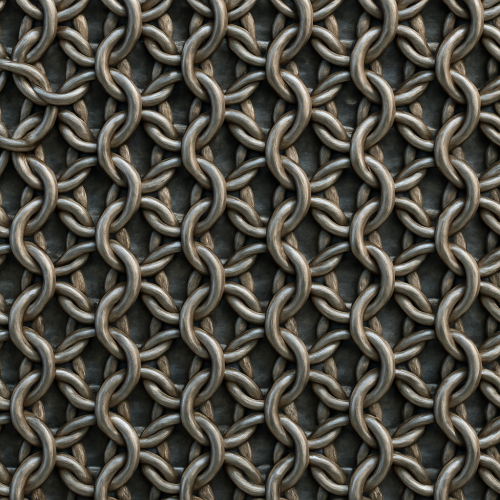
Capturing chainmail textures for physically based rendering workflows presents unique challenges owing to the intricate interlocking metal rings, subtle surface imperfections, and the complex interplay of light on metallic surfaces. To achieve accurate, high-fidelity PBR textures that convincingly replicate the weave pattern and metal characteristics of chainmail, acquiring detailed surface data through high-resolution scanning or photogrammetry is essential. These acquisition techniques provide the foundation for generating the layered texture maps—albedo, roughness, normal, ambient occlusion (AO), height, and metallic—that define the material response under various lighting conditions.
When undertaking high-resolution scanning of chainmail, precision and calibration are critical. Chainmail’s geometry consists of minute, repetitive ring structures that demand scanning equipment capable of capturing sub-millimeter detail. Structured light scanners or laser scanners with a resolution better than 0.1 mm are recommended to preserve the individual ring profiles and the subtle surface micro-variations such as dents, scratches, and oxidation patterns. The scanning environment should minimize ambient vibrations and lighting fluctuations to reduce noise in the data. Calibration targets must be placed strategically around the sample to ensure geometric accuracy and alignment during multi-scan registration. Using a matte spray or powder coating may be necessary to reduce specular highlights on the metallic surface during scanning; however, this can alter the surface character and must be carefully removed or accounted for during texture authoring.
Photogrammetry offers an alternative or complementary approach, particularly useful for capturing larger or more complex chainmail samples where scanner accessibility is limited. High-resolution DSLR or mirrorless cameras equipped with macro lenses are preferred to capture the fine detail of chainmail rings. Consistent, diffuse lighting conditions help avoid harsh reflections that can confuse the photogrammetry algorithms. Using cross-polarized lighting setups can significantly reduce metallic glare, providing more reliable albedo capture. Multiple overlapping images with high coverage—typically 70% to 80% overlap—around the subject ensure robust mesh reconstruction and texture baking.
Both scanning and photogrammetry workflows benefit from meticulous attention to scale calibration. Since chainmail textures often tile across large surfaces in 3D models, establishing a precise real-world scale during acquisition is vital to maintain believable proportions and avoid visual repetition artifacts. Using calibrated rulers or scale bars included in the scene enables accurate dimensioning during mesh processing and texture projection stages. This step ensures that the final texture maps can be tiled seamlessly and maintain dimensional fidelity when applied in engines like Unreal Engine or Blender.
Once the raw meshes and images are acquired, the next step involves converting this data into usable PBR texture maps. The high-resolution mesh generated from scanning or photogrammetry is first processed to produce a clean, optimized low-poly model suitable for baking. Mesh decimation routines must be applied judiciously to preserve the chainmail’s intricate ring geometry—over-simplification will result in loss of normal and height detail. Retopology tools can be employed to create a quad-based topology that facilitates UV unwrapping and efficient texture layout, especially for tiling patterns.
UV unwrapping should aim for minimal distortion and logical seams aligned with the natural flow of the chainmail weave. Given the repetitive nature of the pattern, creating a tileable UV island that captures a representative section of the weave is standard practice. This approach allows for efficient texture reuse, reducing memory footprint and enabling scalable detail across large assets in real-time engines. Careful attention is required to incorporate sufficient padding around UV islands to prevent texture bleeding and to maintain crisp normal map detail.
Albedo (base color) maps must be derived from the calibrated, glare-reduced photographic data to capture the true color variation of the metal, including subtle oxidation, discoloration, or dirt accumulation in the recesses of the weave. Since chainmail is metallic, the albedo generally lacks diffuse color variation and appears as near-neutral gray or slightly tinted metal hues. It is crucial to separate true color information from lighting and shading artifacts during texture baking by neutralizing shadows and specular highlights. This can be achieved through indirect lighting removal techniques or by using specialized software that isolates diffuse albedo components.
The metallic map for chainmail is typically a binary or near-binary mask indicating the metal vs. non-metal areas. Since chainmail is purely metallic, this map is often uniformly white, except for possible non-metallic inclusions like leather straps or fabric backing, which must be masked accurately if present. Correct metallic values are vital for the shader to interpret reflectance behavior correctly, especially in engines that implement energy-conserving BRDF models such as Unreal Engine’s standard shading pipeline.
Roughness maps are critical in conveying the micro-surface variations that affect light scattering on chainmail. The acquisition process should capture the subtle roughness differences between polished ring surfaces and weathered or corroded areas. High-resolution scanning can inform these maps by analyzing microsurface normals and reflectance data, while photogrammetry-derived albedo images can be processed to extract roughness cues through grayscale intensity variations or filtered ambient occlusion. In authoring, roughness maps often require manual refinement to balance realism and engine performance, ensuring that highlights and reflections respond naturally without appearing overly smooth or artificially noisy.
Normal maps generated from high-frequency surface detail are fundamental to reproducing the chainmail weave’s depth and complexity. Baking normal maps from the high-resolution scan mesh onto the optimized low-poly geometry captures the interlocking ring structure and small dents or imperfections. It is essential to use tangent space normal maps compatible with the target engine, and to validate them in real-time viewport previews to detect any artifacts such as seams, inverted normals, or compression issues. Employing techniques like curvature maps or cavity maps in tandem can further enhance the perception of depth and detail when combined with normal data.
Ambient occlusion (AO) maps baked from the geometry provide essential shadowing cues in the crevices between rings, enhancing the perceived depth of the weave. High-quality AO maps complement real-time global illumination by pre-baking occlusion in areas where light penetration is naturally limited. When authoring AO maps, care must be taken to avoid over-darkening that can obscure texture detail or create unnatural contrast. Multiplying AO maps with albedo or roughness inputs should be done following engine-specific workflows to maintain energy conservation and consistent shading.
Height maps derived from the scanning data serve multiple purposes, from parallax occlusion mapping to displacement in offline renderers. Chainmail height maps must accurately capture the ring elevations and depressions without introducing excessive noise that can cause rendering artifacts. Filtering and smoothing algorithms can be applied carefully to preserve sharp edges of the weave pattern while suppressing scanning noise. Height data can also be used to generate secondary normal maps or curvature maps, further enriching the surface detail.
Optimization considerations are paramount throughout the acquisition and authoring process. Chainmail textures, due to their fine detail and repetitive nature, can easily become performance-heavy if not managed properly. Implementing tileable textures with carefully crafted UV layouts reduces texture memory usage while maintaining visual fidelity. Employing mipmapping strategies with detail normal maps and blending can preserve sharpness at close viewing distances while optimizing rendering cost at a distance. In game engines like Unreal Engine, using virtual texture streaming or texture atlasing can further enhance performance without sacrificing detail.
In Blender, procedural texturing techniques can augment scanned data by introducing micro-variation and imperfections that scanning might miss or that are impractical to capture, such as subtle grime, rust, or wear patterns. Combining scanned texture maps with procedural masks and noise textures allows artists to break uniformity and elevate realism. The integration of scanned textures into Blender’s shader nodes or Unreal Engine’s material editor should maintain linear workflow standards and employ correct gamma space conversions—albedo in sRGB, roughness and metallic in linear space—to ensure physically accurate rendering.
In summary, successful acquisition of chainmail PBR textures hinges on capturing the minute geometric and optical properties of the weave through high-resolution, calibrated scanning or photogrammetry. These methods provide detailed mesh and photographic data essential for generating the full suite of PBR maps that accurately represent metalness, roughness, and microstructural detail. Subsequent careful processing, UV mapping, and optimization tailored for real-time engines enable the creation of realistic, performant chainmail materials that hold up under varied lighting conditions and viewing angles.
Creating convincing chainmail PBR textures involves a careful interplay between procedural generation and photographic elements, leveraging the strengths of each to capture the intricate patterns and subtle material variations inherent in maille. Chainmail surfaces are complex: they consist of thousands of interlocking metal rings, each reflecting light and casting micro-shadows in unique ways. To authentically replicate this complexity, an artist must balance the broad control afforded by procedural techniques with the nuanced detail and realism that photographic sources provide.
Procedural generation excels at establishing the foundational structure of chainmail patterns. By leveraging node-based systems in software such as Substance Designer or procedural shaders within Blender, artists can algorithmically generate the repetitive ring patterns that define various maille types—be it 4-in-1, 6-in-1, or more exotic configurations. This approach enables precise control over ring size, spacing, orientation, and overlap, ensuring perfect tiling and avoiding visual artifacts common in photographic tiling textures. Procedural normal and height maps generated from vector or height pattern inputs can simulate the subtle relief of interlocking rings, providing crisp surface details that respond well to dynamic lighting in PBR engines.
However, procedural methods alone often produce surfaces that feel too uniform or synthetic. The homogeneity of purely generated patterns lacks the micro-variation and imperfections present in real-world chainmail, such as slight deformations, wear, surface corrosion, or the uneven accumulation of grime and patina. This is where integrating photographic elements becomes essential. High-resolution photo captures of actual maille—preferably taken with controlled lighting to minimize specular hotspots—can be processed to extract albedo, roughness, ambient occlusion, and sometimes metallic details. These photographic maps inject organic irregularities and subtle color shifts that are difficult to replicate procedurally.
The key to successful texture authoring lies in blending these two approaches effectively. One common workflow begins with a robust procedural base pattern for the normal and height maps, ensuring the metal rings’ topology and microgeometry are correctly represented and perfectly tileable. This base then serves as a mask or guide within the shader to selectively apply photographic detail. For example, a grayscale ambient occlusion map derived from a photograph can be blended with the procedural AO to enhance contact shadows within the ring overlaps, creating a richer perception of depth. Similarly, photographic albedo maps can be layered with procedural color variations to simulate oxidation or dirt accumulation localized within crevices.
In the roughness channel, procedural noise functions can modulate the base roughness values extracted from photographic sources. This modulation introduces micro-roughness variation across the surface, breaking up uniform reflections and mimicking the subtle inconsistencies of real metal. Physically based workflows demand that these roughness maps are calibrated to the specific metal type—whether polished steel, dull iron, or tarnished bronze—ensuring energy conservation and consistent reflectance behavior under various lighting conditions. Utilizing linear workflows and carefully linearizing photographic inputs prevents non-physical results when combined with procedural data.
Metallic maps, though often uniform for chainmail, can also benefit from this hybrid approach. While chainmail rings are typically metallic, subtle deviations occur due to rust, dirt, or plating wear. Procedural masks derived from curvature or cavity maps can isolate edges and recesses where metallic values are reduced, allowing photographic detail to dictate localized metalness variations. This nuanced control enhances realism when viewed in engines like Unreal Engine or Blender’s Eevee and Cycles renderers.
Tiling is critical in chainmail textures due to the repetitive nature of the pattern. Procedurally generated patterns inherently tile seamlessly, but photographic elements often present challenges such as visible seams or repeated motifs that break immersion. To address this, photographic inputs must be carefully processed using tools like Substance Designer’s “Make It Tile” node or manual clone stamping to eliminate seams. Alternatively, non-repetitive photographic detail can be applied as a detail or micro-variation layer via triplanar projection in shader graphs, ensuring that close-up views retain photographic authenticity without obvious repetition.
Calibration of the texture maps against real-world references is indispensable. Measured reflectance data or high-quality reference photographs under standardized lighting conditions assist in tuning albedo and roughness values. For example, steel chainmail typically exhibits a base color ranging from mid-gray to slightly bluish hues, with roughness values that vary between 0.15 to 0.4 depending on wear and polish. Adjusting procedural noise scales and intensities in roughness maps to match these values ensures consistent shading across different lighting environments. Ambient occlusion maps must be subtle and never exceed the physically plausible range, as over-darkening crevices can flatten the appearance or produce unrealistic shadows.
Optimization is another crucial consideration, especially when deploying chainmail textures in real-time engines. High-resolution photographic maps can be expensive in memory, so blending them with procedural detail allows for lower-resolution photo inputs compensated by procedural sharpness and micro-detail. Normal maps generated procedurally tend to be highly efficient and tile well, reducing the need for large normal map textures. Additionally, using channels efficiently—packing ambient occlusion, roughness, and metallic maps into single texture sets—minimizes GPU cost without sacrificing quality.
In engines like Unreal Engine, material functions and layered materials facilitate the integration of procedural and photographic components. For instance, a base material can use procedural normal and height maps to define geometry detail, while mask-driven layered materials overlay photographic albedo and roughness variations. Dynamic parameters or vertex painting can further enhance micro-variation by blending in grime or rust details localized through vertex colors or world-space masks. Blender’s shader editor similarly supports combining procedural texture nodes with image textures, allowing artists to preview the interplay of generated and photographic data in real time under HDRI lighting or custom setups.
Practical tips for authoring chainmail PBR textures include starting with a solid procedural pattern to guarantee seamlessness and accurate ring topology, then incrementally layering photographic details for realism. Avoid over-reliance on photographic normal maps alone; instead, generate your own from height or vector masks to maintain consistent scale and detail fidelity. When incorporating dirt, rust, or surface imperfections, use curvature and cavity maps derived from procedural normals to guide detail placement, ensuring these effects respect the underlying geometry. Finally, continuously test textures under various lighting conditions and viewing angles—especially close-ups—to confirm that the combined procedural and photographic workflow delivers the intended physical plausibility and visual richness.
In summary, the successful creation of chainmail PBR textures necessitates a symbiotic fusion of procedural generation and photographic authoring. Procedural methods provide the indispensable structure and tiling integrity of the ring pattern, while photographic elements imbue the surface with the nuanced imperfections and material complexity that define authentic metal maille. Through careful calibration, channel blending, and engine-specific optimization, artists can produce chainmail textures that are both physically accurate and visually compelling within modern PBR workflows.
Creating accurate PBR maps for chainmail demands a nuanced understanding of the material’s unique physical and optical properties, as well as a careful calibration of each texture channel to maintain physical plausibility and visual fidelity within a rendering engine. Chainmail, composed of interlinked metal rings, presents a complex interplay of metallic reflectance, microscopic surface variations, and subtle irregularities in weave and wear that must be translated into maps supporting physically based shading models. To achieve this, one must approach the generation and tuning of albedo, roughness, metallic, normal, ambient occlusion, and height maps with precision, leveraging both photographic references and procedural techniques, and optimizing the output for real-time engines such as Unreal Engine or offline renderers within Blender.
The albedo (or base color) map for chainmail is deceptively simple yet critical in defining the underlying color information without baked-in shading or reflectivity. Given that chainmail is primarily metallic steel or iron, the albedo should be nearly desaturated, with subtle variations in hue and value to represent oxidation, dirt accumulation, or slight discolorations caused by wear. These variations introduce realism by breaking the uniformity of the metal surface. It’s essential to avoid any artificial darkening or shadowing in the albedo, as these belong in the ambient occlusion or roughness maps. When authoring albedo, reference high-resolution photographs of chainmail under neutral lighting, isolating diffuse coloration through channel separation techniques or using photogrammetry data that can be cleaned in software like Substance Painter or Quixel Mixer. For procedural creation, subtle noise overlays with low contrast and a faint blue-gray tint can emulate the cool metal base, while careful layering of rust or grime masks can target specific rings to simulate environmental aging.
Roughness maps are the cornerstone for simulating the microfacet scattering behavior of metal surfaces, and for chainmail, they must capture the interplay between polished ring faces and duller, worn edges. Unlike organic materials, metal roughness values tend to be low, but chainmail is rarely uniformly polished; small scratches, dents, and oxidation patches increase roughness locally. Achieving an accurate roughness map involves sampling micro-variations at the scale of individual rings, which can be done by combining high-frequency noise textures with detail maps extracted from real-world scans or photos. Calibration is key: roughness values should generally range from 0.1 to 0.4 for polished areas and increase to 0.5–0.7 in corroded or dirtier regions. This variation prevents a flat metallic sheen and enables the renderer’s microfacet model to produce visually convincing highlights and reflections. Empirical tuning is facilitated by iterative viewing in the target engine’s viewport under HDRI lighting conditions, adjusting values to maintain proper highlight sharpness without appearing unnaturally glossy or flat.
The metallic map for chainmail is straightforward in principle but requires attention to detail in practice. Since the entire surface is metal, the metallic channel should be set to pure white (1.0) wherever metal is present. However, chainmail often contains non-metallic elements such as leather straps or fabric linings, which must be masked out appropriately. Additionally, subtle inclusions of rust or oxidation, while chemically metal-based, do not behave optically as clear metals and should be represented with lower metallic values or treated as non-metallic regions with higher roughness. This nuanced treatment ensures the renderer interprets these areas as dielectric rather than metallic, affecting their reflectance curves correctly. When authoring, it is advisable to generate a mask layer that differentiates pure metal rings from non-metallic contaminants, enabling flexible adjustments. In engines like Unreal, this channel is typically stored in the red or blue channel of packed textures, necessitating precise channel management during export.
Normal maps for chainmail are vital in conveying the intricate woven structure of interlinked rings, which defines the silhouette’s microgeometry and affects light interaction on a sub-polygonal level. A well-crafted normal map should reflect the alternating pattern of convex ring surfaces and the concave gaps between them, as well as small surface deformations such as ring dents and uneven overlaps. Generating these normals can be approached through high-poly baking workflows, where a high-resolution mesh of the chainmail’s geometry is projected onto a low-poly base mesh. Alternatively, procedural normal generation using height maps or displacement maps can complement baked data to add fine-grain noise and micro-variations. Care must be taken to ensure the normal map’s tangent space consistency, especially when the mesh undergoes UV seams or mirroring. In Blender, baking normals from a detailed sculpt is straightforward but requires attention to cage settings and ray distance to avoid projection artifacts. In Unreal Engine, the normal map’s strength and orientation can be fine-tuned with material node setups to enhance or soften the weave’s relief as needed.
Ambient occlusion (AO) maps play a supporting role by simulating the self-shadowing effects within the dense weave of chainmail. While AO is often baked from high-poly geometry, it should be calibrated to avoid excessive darkening that would flatten the fine details of the rings. Given the small scale of chainmail rings, the AO radius should be set delicately to capture the subtle occlusions between touching rings without bleeding into adjacent areas. Furthermore, AO can be combined multiplicatively with roughness or albedo channels in material graphs to enhance perceived depth and contrast without adding geometric complexity. In real-time workflows, it is common to use a low-resolution, tiling AO map that preserves the pattern’s continuity, carefully blending it with vertex AO or dynamic ambient occlusion techniques available in the engine for optimal performance.
Height maps (or displacement maps) serve as an optional but powerful tool to accentuate the chainmail’s surface topology, especially in offline rendering or engines supporting tessellation or parallax occlusion mapping. Height maps can highlight the raised metal rings and the recessed gaps, producing more convincing silhouettes and contact shadows. When authoring height maps, it is crucial to maintain a limited height range to prevent unrealistic artifacts or self-intersections during tessellation; typical displacement values are in the sub-millimeter range relative to the model scale. Procedural generation can assist in creating uniform ring patterns, while photographic height data extracted from microphotography can add micro-roughness. In Blender’s Cycles renderer, adaptive subdivision or microdisplacement can utilize these maps effectively. In Unreal Engine, height maps feed into parallax occlusion nodes for dynamic surface detail, but must be optimized for tiling and compression to minimize VRAM usage.
Tiling is another critical consideration when authoring chainmail PBR textures. Due to the repetitive nature of the chainmail weave, textures must tile seamlessly both horizontally and vertically to avoid visible seams. However, perfect repetition can result in monotonous appearance and pattern recognition by the viewer. To mitigate this, micro-variation techniques are applied, such as blending in subtle noise layers, introducing random dirt spots, or overlaying small scratches and wear marks across the texture. These variations break the uniformity without disrupting the overall pattern, preserving the structural integrity of the weave while enhancing realism. When creating tileable textures, it is advisable to test tiling both in isolation and in context, using engine viewport tools to identify and correct any obvious seams or repetitive artifacts.
Calibration across all maps is essential to ensure they work harmoniously under physically based shading models. For instance, the albedo and metallic maps jointly define the Fresnel reflectance at grazing angles, so their values must be physically consistent: metallic areas should not possess any significant diffuse albedo, and non-metallic regions should not exhibit metallic reflectance. Roughness values must be carefully balanced against the normal map’s micro-detail to avoid conflicting signals that confuse the renderer’s microfacet calculations. AO and height maps should complement, not compete with, the baked lighting or dynamic shadows in the scene. Frequent iterations with the target rendering setup, including exposure and environment lighting conditions, help identify discrepancies that require map adjustments. Using standardized calibration tools, such as grayscale ramps and reflectance charts, can assist in maintaining consistent brightness and contrast ranges across texture sets.
Optimization is another practical consideration, especially for real-time applications. Chainmail textures can be memory-intensive if each map is stored at high resolution. Efficient packing strategies—such as combining roughness, metallic, and AO into a single RGB texture—reduce texture fetches and memory overhead. Mipmapping should be configured to preserve detail without introducing blurring that obscures the chainmail’s fine features. In Unreal Engine, Material Instance parameters can be used to adjust roughness or tint dynamically, allowing for material variation without multiple texture sets. In Blender, shader node groups enable procedural blending with texture maps, facilitating non-destructive edits. Additionally, considering the LOD system and texture streaming settings ensures the chainmail maintains fidelity at close-up views while scaling down effectively at a distance.
In summary, crafting physically accurate PBR maps for chainmail entails a disciplined workflow that integrates precise map generation, meticulous calibration, and performance-conscious optimization. By faithfully capturing the metallic sheen, intricate weave structure, and surface imperfections through carefully tuned albedo, roughness, metallic, normal, AO, and height maps, the resulting textures can convincingly replicate the complex visual behavior of chainmail under varied lighting conditions. This approach supports robust, flexible materials suitable for modern real-time engines and offline renderers alike, enabling 3D artists and technical directors to achieve both realism and efficiency in their chainmail assets.
